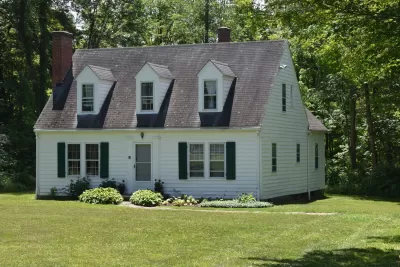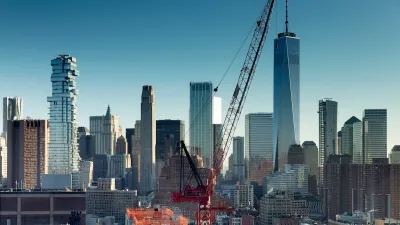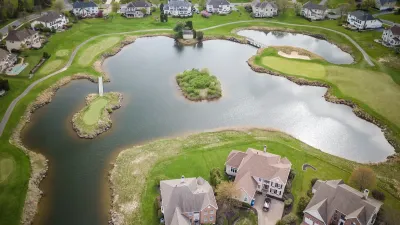Buying a house through the Sears catalog was, for a brief historical moment, a popular and affordable way to become a homeowner.

In an article in Fast Company, Adele Peters wonders why the Sears catalog homes popular in the early 20th century are no longer an affordable housing option. “When a $1.1 million Craftsman house in Boulder, Colorado, was first built in 1923, the materials came from a Sears catalog kit that cost $1,797, or the equivalent of around $32,000 today. Even with the extra cost of buying land, adding a foundation, plumbing, electricity, and potentially hiring a construction crew—though the house could technically be put together yourself, Ikea-style—it might have cost a total of around $64,000 in today’s dollars, a fraction of what it costs to build or buy a house now.”
As Peters notes, this wasn’t due to a lack of quality, either. “Sears used high-quality materials, and a century later, people still want to buy the houses. What made it economically possible for the company to offer this type of kit house then—and is it possible to do it today?” This was due in part to lower material costs, pre-fabrication and bulk purchasing, and the fact that many of the buyers built the home themselves.
So what are the challenges to replicating the success of the Sears catalog home now? “Large companies now could replicate that scale in prefab factories, but there are other challenges. Modern houses have more features that add to the cost—including insulation, energy-efficient windows, and new safety features.” Moreover, zoning regulations and building codes decided at the local level make it difficult to mass-produce homes that would pass every locality’s requirements.
Zoning reforms that lead to more permissive codes and state-level zoning changes can bring back the market for pre-fabricated homes. The concept is already popular with organizations building emergency shelter housing and vacation rentals. Some cities, such as Los Angeles, have developed a set of pre-approved designs for accessory dwelling units (ADUs), an increasingly popular tool for boosting the housing supply.
FULL STORY: A Sears house today should cost $32,000. Why can’t you buy one?

Trump Administration Could Effectively End Housing Voucher Program
Federal officials are eyeing major cuts to the Section 8 program that helps millions of low-income households pay rent.

Planetizen Federal Action Tracker
A weekly monitor of how Trump’s orders and actions are impacting planners and planning in America.

The 120 Year Old Tiny Home Villages That Sheltered San Francisco’s Earthquake Refugees
More than a century ago, San Francisco mobilized to house thousands of residents displaced by the 1906 earthquake. Could their strategy offer a model for the present?

HSR Reaches Key Settlement in Northern California City
The state’s high-speed rail authority reached an agreement with Millbrae, a key city on the train’s proposed route to San Francisco.

Washington State Legislature Passes Parking Reform Bill
A bill that would limit parking requirements for new developments is headed to the governor’s desk.

Missouri Law Would Ban Protections for Housing Voucher Users
A state law seeks to overturn source-of-income discrimination bans passed by several Missouri cities.
Urban Design for Planners 1: Software Tools
This six-course series explores essential urban design concepts using open source software and equips planners with the tools they need to participate fully in the urban design process.
Planning for Universal Design
Learn the tools for implementing Universal Design in planning regulations.
Ada County Highway District
Clanton & Associates, Inc.
Jessamine County Fiscal Court
Institute for Housing and Urban Development Studies (IHS)
City of Grandview
Harvard GSD Executive Education
Toledo-Lucas County Plan Commissions
Salt Lake City
NYU Wagner Graduate School of Public Service





























